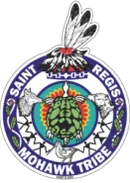Programs
-
Community & Family Services
- Care Management Program
- Child Support Enforcement Unit
- Family Support
- HCBS Waiver
- Home Improvement Supplement Program (HIP)
- Homeowner's Assistance Fund
- Individual Residential Alternatives (IRA)
- Individual Supports and Services (ISS) - Housing Subsidy Program
- Office of the Family Advocate
- Three Sisters Program
- Tribal Vocational Rehabilitation (TVR)
- Community Partnership Fund
- Economic Development
- Education
- Environment
- Executive Director's Office
- Finance
- Generations Park
- Grants & Contracts
-
Health Services
- A/CDP Outpatient
- A/CDP Prevention
- Partridge House (Inpatient)
- Ronthahiiohsthá:ke Clubhouse
- Business Office
- Centering Pregnancy
- Dental Clinic
- Health Promotion and Planning
- Laboratory
- Let's Get Healthy - Diabetes Center for Excellence
- Medical Clinic
- Mental Health - Kanikonri:ihne (Good Mind Counseling)
- Outreach Chronic Care Nursing
- Pharmacy
- School-Based Health Center
- Home Improvement Supplement Program (HIP)
- Human Resources
- Office for the Aging
- Office of Emergency Management and Safety
- Planning and Infrastructure
- Social Services Division
- Tribal Historic Preservation Office
- Tribal Police
In order to remove the impairment, the following removal criteria must be met:
- Benthic macroinvertebrate community structure does not significantly diverge from unimpacted control sites of comparable physical and chemical characteristics; AND
- In the absence of community structure data, the absence of community structure data, the toxicity of sediment-associated contaminants is not significantly higher than controls at unimpacted sites; AND
- Survival and successful reproduction1 of the most prevalent unionid species2 consistently throughout the Lower Grasse River post-remedy; AND
- Substrate Remediated areas3 contain habitat conducive to continuing unionid species recovery and persistence.
Notes:
- Survival defined by % of adult mussel survival post-remedy by species, propagated mussel survival, and demonstrated success of juvenile development to adults as defined in the Draft Recovery Plan for the lower Grasse River Freshwater Mussel Community. Successful reproduction defined by presence of multiple age classes of juveniles of each mussel species in remedial areas post-remedy.
- The species that can be consistently found during mussel recovery/surveys efforts: E. complanata, L. radiata, L. cardium, L. cariosa, P. alatus, L. fragilis, P. cataracta, P. grandis, U. imbecillis, L. nasuta, S. undulatus, L. costata (definition presumes less prevalent species: A. undulata, A. marginata, L.recta, and L.compressa will occur at similar low densities if major species recover)
- At least 10% of the in-river remediation footprint contains high quality freshwater mussel substrate habitat of mussel reproduction and juvenile growth
This BUI was re-designated as unimpaired by the SLR AOC at Cornwall/Akwesasne in 2007.

